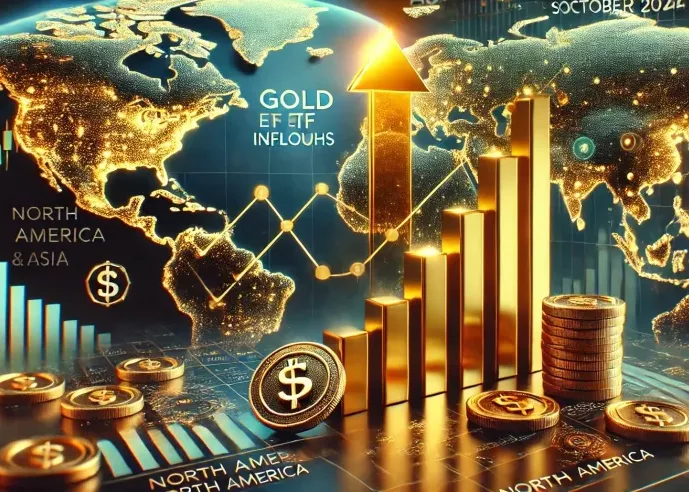he World Gold Council (WGC) expects investor interest in gold to remain strong following unprecedented inflows into gold exchange-traded funds (ETFs) in January 2025. The cumulative assets under management for gold ETFs grew to ₹51.8 billion (approximately $6 billion), marking a 15% month-on-month increase. During this period, 4.6 tonnes of gold were added to the total holdings, pushing the collective stock to 62.4 tonnes, according to WGC’s India report.
Diversification Amid Economic and Policy Uncertainty
The report suggests that these significant inflows can be attributed to investors reallocating their free cash flow towards gold ETFs for diversification purposes, as global and domestic economic and policy uncertainties continue to mount. The ongoing volatility in the domestic equity markets, driven by sluggish growth and investor concerns, has further contributed to this shift. Many investors are pulling back from equities in favor of gold’s safe-haven appeal, seen as a stable asset during uncertain times.
Data from the Association of Mutual Funds in India (AMFI) supports this view, revealing that net inflows into gold ETFs in January 2025 reached ₹3,751.42 crore, a significant increase from ₹640.16 crore in December 2024. This surge comes in the wake of the Indian government’s decision not to issue any sovereign gold bonds as part of its market borrowing program. As a result, market uncertainty is expected to continue driving the flow of investments into gold ETFs.
Slowing Jewellery Demand Amid High Prices
Despite the strong interest in gold ETFs, the WGC report also highlighted a slowdown in demand for gold jewelry. The high price of gold has led many consumers to hold off on fresh purchases, opting instead to exchange old gold for new jewelry. In some cases, people are choosing to sell their old gold in order to lock in profits while gold prices remain elevated.
This reduction in jewelry demand has left retailers hesitant to restock, as consumer purchasing power is affected by the high prices. The report pointed out that many buyers are adopting a more cautious approach, waiting for potential price corrections or simply selling their old gold for profit.
RBI’s Continued Gold Accumulation
Another notable development in the gold market is the Reserve Bank of India’s (RBI) renewed gold purchases. After a brief pause in December 2024, the RBI resumed buying gold in January, adding 2.8 tonnes to its reserves. This purchase brought India’s total gold reserves to a new high of 879 tonnes. The RBI’s sustained buying activity suggests that the central bank will continue accumulating gold, following its substantial purchase of 72.6 tonnes in 2024.
The central bank’s gold accumulation is seen as part of a broader trend where many central banks around the world are increasing their gold holdings as a hedge against inflation and economic risks, especially as global geopolitical and economic uncertainties persist.
Outlook for Gold ETFs and Jewelry Demand
Looking ahead, gold ETFs are expected to continue benefiting from the ongoing market volatility. The demand for gold as a hedge against economic and policy uncertainty, particularly in emerging markets like India, remains strong. However, jewelry demand may remain subdued as high prices and economic pressures affect consumer spending.
With the RBI continuing to add to its gold reserves and investors shifting funds into gold ETFs, gold’s role as a safe-haven asset is likely to remain a key theme in the coming months. If the uncertainty surrounding global markets continues, gold could see further inflows into ETFs, while jewelry demand might experience slower growth until prices stabilize.
Related topics:
What Is The South African Krugerrand?
What Is The Scrap Value Of 22 Carat Gold
How Much Silver Cost per Gram In India

